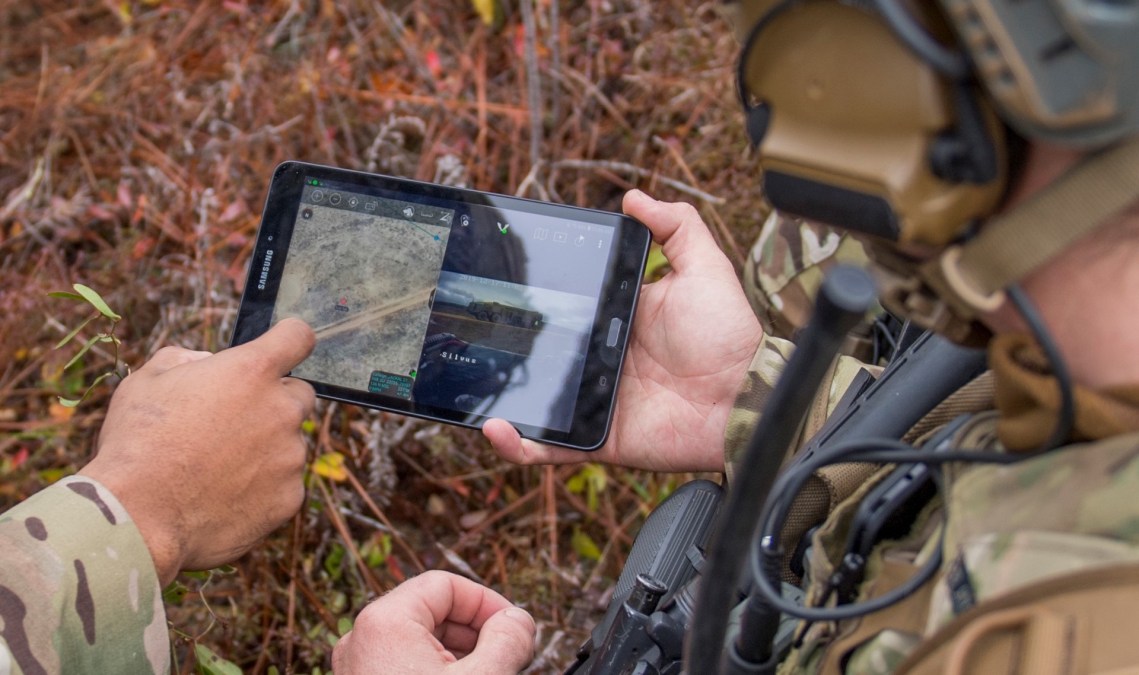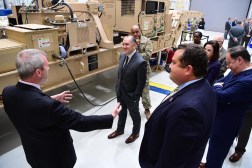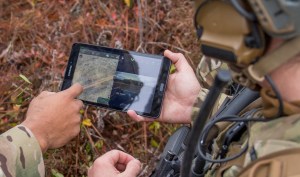Air Force moving Project Maven into Advanced Battle Management System portfolio

The program office for Project Maven — the Air Force’s first major foray into using artificial intelligence to scan drone footage — is being transitioned into the Advanced Battle Management System (ABMS) portfolio as the service continues positioning more of its traditional backend IT capabilities to support broader warfighting functions.
The Air Force is working to fold Project Maven into its ABMS tech stack to use the program’s AI capabilities to analyze and link data from the vast array of sensors used in battle. ABMS is the technical backbone of the joint force’s concept of Join All-Domain Command and Control (JADC2) — a network-of-networks that aims to link “every sensor to every shooter” across air, land, sea, space and cyber.
The Air Force is transitioning Project Maven to align AI-efforts and bring new capabilities to machine-to-machine data sharing, Will Roper, the Air Force’s assistant secretary for acquisition, technology and logistics, said Friday. “We are bringing Maven capabilities into the developing tech stack for ABMS.”
Maven gained notoriety in 2018 when Google pulled out of work on the project over ethical objections from some employees that the tech giant should not work with the Department of Defense on lethal warfighting tools. The project was designed to increase the lethality of airpower by using machine learning and computer vision to analyze large quantities of drone footage.
ABMS is similar to Maven in that it aims to use AI to improve the coordination of so-called kill chains and remove humans from tedious tasks. The in-development platform, however, focuses more broadly on networking and communications systems across domains to support military operations. The plan is that AI-enabled systems will process raw data collected from battle, turn it into actionable insights and push it to the people in the chain of command who need it.
Currently, data is processed by airmen looking at screens and communicating information they analyze by radios, Roper said. “That is a losing formula.”
The vision of a highly networked joint force remains the talk of panels and the focus of contracts, but the true development and build-out of the capabilities will come in test events that have been delayed due to the coronavirus pandemic. The next “mega-event” with all services participating will take place in September. That’s when the Air Force hopes “to bring Maven capabilities to bear,” Roper said.
“Our excuse for not having AI is over,” he said.
The Air Force is also funneling many of its other key IT platforms into ABMS development. For instance, Cloud One and Platform One are both now supporting ABMS cloud and enterprise software development needs. Platform One was recently designated as the Pentagon’s first enterprisewide DevSecOps platform with which coders across the services can develop products to meet mission needs. The platform is used, along with cloud services from Cloud One, in other programs across the Air Force.
The department is now full-steam-ahead on using both platforms for the most advanced warfighting system development, Roper said.
“There is no distinction between development systems and warfighting systems anymore in IT,” he said. “ABMS and Maven are going to start blurring that line in September.”





